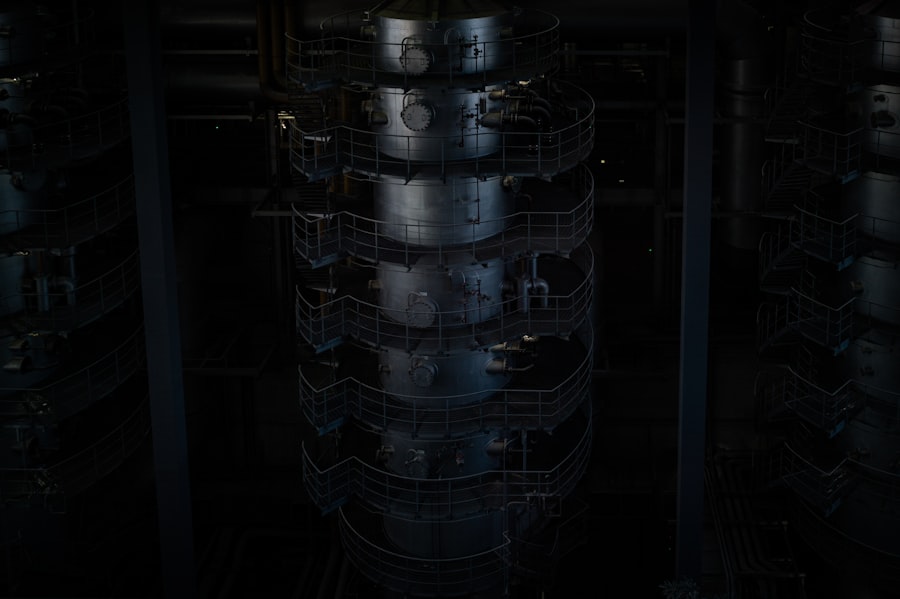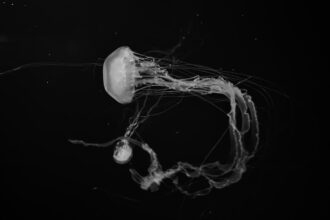Pressurized water reactor (PWR) submarines represent a significant advancement in naval engineering, combining the principles of nuclear power with the stealth and maneuverability of underwater vessels. These submarines utilize pressurized water reactors to generate steam, which drives turbines and propels the submarine through the depths of the ocean. The introduction of PWR technology has revolutionized naval warfare, allowing submarines to operate for extended periods without the need for refueling, thus enhancing their strategic capabilities.
The silent operation and extended range of these vessels have made them a cornerstone of modern naval fleets. The significance of PWR submarines extends beyond mere propulsion; they embody a complex interplay of technology, military strategy, and environmental considerations. As nations seek to maintain a competitive edge in maritime defense, the development and deployment of PWR submarines have become a focal point in naval strategy.
Their ability to remain submerged for long durations while carrying advanced weaponry positions them as formidable assets in any naval engagement. This article delves into the history, advantages, components, safety features, environmental impact, innovations, challenges, and future prospects of pressurized water reactor submarines.
Key Takeaways
- Pressurized Water Reactor (PWR) submarines are a type of nuclear-powered submarine that use pressurized water as a coolant and neutron moderator.
- PWR submarine design has evolved over the years, with the first operational PWR submarine being the USS Nautilus in 1954.
- Advantages of PWR submarines include their ability to operate at high speeds for long durations, their extended range and endurance, and their ability to remain submerged for extended periods.
- Key components of PWR submarine design include the reactor core, steam generators, propulsion system, and control systems.
- Safety features in PWR submarines include redundant systems, rigorous training for crew members, and strict adherence to safety protocols to prevent accidents and minimize environmental impact.
History of Pressurized Water Reactor Submarine Design
The journey of pressurized water reactor submarines began in the mid-20th century, during the height of the Cold War. The United States Navy was at the forefront of this technological evolution, driven by the need for submarines that could operate undetected for extended periods. The first successful implementation of a PWR in a submarine was aboard the USS Nautilus, launched in 1954.
This groundbreaking vessel marked a pivotal moment in naval history, demonstrating the feasibility of nuclear propulsion and setting the stage for subsequent designs. Following the success of the Nautilus, other nations quickly recognized the strategic advantages offered by PWR submarines. The Soviet Union, in particular, invested heavily in developing its own nuclear submarine fleet, leading to a fierce arms race beneath the waves.
Throughout the 1960s and 1970s, various classes of PWR submarines were developed, each incorporating lessons learned from previous designs. This period saw significant advancements in reactor technology, hull design, and stealth capabilities, culminating in a new era of underwater warfare.
Advantages of Pressurized Water Reactor Submarines

One of the most compelling advantages of pressurized water reactor submarines is their ability to remain submerged for extended periods without surfacing. Unlike conventional diesel-electric submarines that require frequent surfacing to recharge batteries, PWR submarines can operate for months at a time on a single fuel load. This capability not only enhances their operational range but also allows them to conduct prolonged missions in hostile environments without detection.
Additionally, PWR submarines are equipped with advanced sonar and weapon systems that provide them with a significant tactical advantage. Their stealthy operation enables them to approach enemy vessels undetected, making them ideal for reconnaissance missions and surprise attacks. The combination of endurance and firepower positions PWR submarines as critical assets in modern naval warfare, capable of executing a wide range of missions from strategic deterrence to anti-submarine warfare.
Components of Pressurized Water Reactor Submarine Design
| Component | Description |
|---|---|
| Reactor Core | The central part of the reactor where nuclear fission takes place to produce heat |
| Steam Generators | Devices that transfer heat from the reactor to the water, producing steam to drive the turbines |
| Pressurizer | Controls the pressure of the reactor coolant system to prevent boiling |
| Control Rods | Devices used to absorb neutrons and control the nuclear reaction in the reactor core |
| Primary Coolant Pumps | Pumps that circulate the reactor coolant through the system to transfer heat |
The design of pressurized water reactor submarines is a complex amalgamation of various components that work together to ensure efficient operation and safety. At the heart of these vessels lies the pressurized water reactor itself, which uses water as both a coolant and a neutron moderator. This reactor design allows for a compact and efficient system that can generate the necessary steam to drive turbines.
In addition to the reactor, PWR submarines are equipped with sophisticated propulsion systems that include turbines and reduction gears. These components convert steam generated by the reactor into mechanical energy that propels the submarine through the water. Furthermore, advanced control systems are integrated into the design to monitor reactor performance and ensure safe operation under varying conditions.
The hull design is also crucial; it must withstand immense underwater pressures while minimizing noise to enhance stealth capabilities.
Safety Features in Pressurized Water Reactor Submarines
Safety is paramount in the design and operation of pressurized water reactor submarines. Given the potential hazards associated with nuclear power, these vessels are equipped with multiple safety features designed to prevent accidents and mitigate risks. One key safety feature is the containment structure surrounding the reactor, which is designed to withstand extreme conditions and prevent the release of radioactive materials.
Moreover, PWR submarines incorporate redundant systems for critical functions such as cooling and power generation. In the event of a malfunction or failure in one system, backup systems can take over to maintain safe operation. Crew training is also an essential aspect of safety; personnel undergo rigorous training programs to prepare for emergency situations and ensure they can respond effectively to any challenges that may arise during operations.
Environmental Impact of Pressurized Water Reactor Submarines

The environmental impact of pressurized water reactor submarines is a topic of considerable debate. On one hand, these vessels produce no greenhouse gas emissions during operation, making them an environmentally friendly alternative to conventional diesel-electric submarines.
However, concerns remain regarding the management of nuclear waste generated by these submarines. The spent fuel must be carefully handled and stored to prevent contamination and ensure safety. Additionally, accidents involving nuclear submarines can have catastrophic consequences for marine ecosystems.
As such, while PWR submarines offer certain environmental advantages, they also pose significant challenges that must be addressed through stringent regulations and responsible management practices.
Innovations in Pressurized Water Reactor Submarine Design
The field of pressurized water reactor submarine design is continually evolving, driven by advancements in technology and changing military needs. Recent innovations have focused on enhancing stealth capabilities through improved hull designs and noise reduction technologies. These advancements allow submarines to operate more discreetly, making them harder to detect by enemy sonar systems.
Furthermore, there has been a push towards integrating advanced automation and artificial intelligence into submarine operations. These technologies can assist crews in monitoring systems more efficiently and responding to potential threats more rapidly. Innovations in materials science have also led to lighter and stronger hull materials that improve performance while reducing maintenance requirements.
As these innovations continue to develop, they promise to further enhance the capabilities and effectiveness of pressurized water reactor submarines.
Challenges in Developing Pressurized Water Reactor Submarines
Despite their many advantages, developing pressurized water reactor submarines presents several challenges that must be navigated carefully. One significant hurdle is the high cost associated with nuclear submarine construction and maintenance. The complexity of nuclear technology requires substantial investment in research, development, and infrastructure, which can strain national budgets.
Additionally, there are geopolitical considerations surrounding nuclear-powered vessels. Nations must navigate international treaties and regulations governing nuclear proliferation while ensuring their submarine fleets remain competitive. This balancing act can complicate development efforts and lead to delays or modifications in design plans.
As countries strive to enhance their naval capabilities through PWR technology, addressing these challenges will be crucial for future success.
Future of Pressurized Water Reactor Submarine Design
Looking ahead, the future of pressurized water reactor submarine design appears promising yet complex. As global tensions rise and maritime security becomes increasingly critical, nations are likely to invest further in advanced submarine technologies. The integration of cutting-edge technologies such as quantum computing and enhanced sensor systems may redefine operational capabilities and strategic applications.
Moreover, there is potential for collaboration between nations on research and development initiatives aimed at improving safety and efficiency in nuclear submarine operations. Such partnerships could lead to shared advancements that benefit multiple countries while addressing common challenges related to nuclear technology. Ultimately, the future trajectory of pressurized water reactor submarines will depend on balancing technological innovation with safety considerations and geopolitical realities.
Comparison with Other Submarine Designs
When comparing pressurized water reactor submarines with other designs, such as diesel-electric or air-independent propulsion (AIP) submarines, several distinctions emerge. Diesel-electric submarines are generally less expensive to build and maintain but require frequent surfacing for battery recharging, limiting their operational endurance compared to PWR vessels. In contrast, AIP submarines offer improved underwater endurance over traditional diesel-electric designs but still fall short of the extended operational capabilities provided by nuclear propulsion.
PWR submarines excel in strategic deterrence roles due to their ability to remain submerged for long periods while carrying advanced weaponry. However, they come with higher operational costs and require specialized training for crews due to their complex systems. Each submarine design has its unique strengths and weaknesses; thus, navies must carefully consider their strategic objectives when selecting the appropriate type for their fleets.
Conclusion and Implications for Naval Warfare
In conclusion, pressurized water reactor submarines have fundamentally transformed naval warfare by providing unparalleled endurance, stealth capabilities, and firepower. Their development has been marked by significant historical milestones that reflect advancements in technology and military strategy. While they offer numerous advantages over traditional submarine designs, challenges related to cost, safety, and environmental impact persist.
As nations continue to invest in PWR submarine technology, understanding its implications for naval warfare becomes increasingly important. The ability to operate undetected for extended periods enhances strategic deterrence while presenting new challenges for adversaries seeking to counter these formidable vessels. Ultimately, pressurized water reactor submarines will remain a critical component of modern naval fleets as they adapt to evolving threats and technological advancements in an ever-changing geopolitical landscape.
In the realm of naval engineering, the design of pressurized water reactor submarines represents a pinnacle of technological advancement and strategic importance. These submarines, which utilize pressurized water reactors for propulsion, offer a unique combination of stealth, endurance, and power, making them a critical asset for modern navies.




